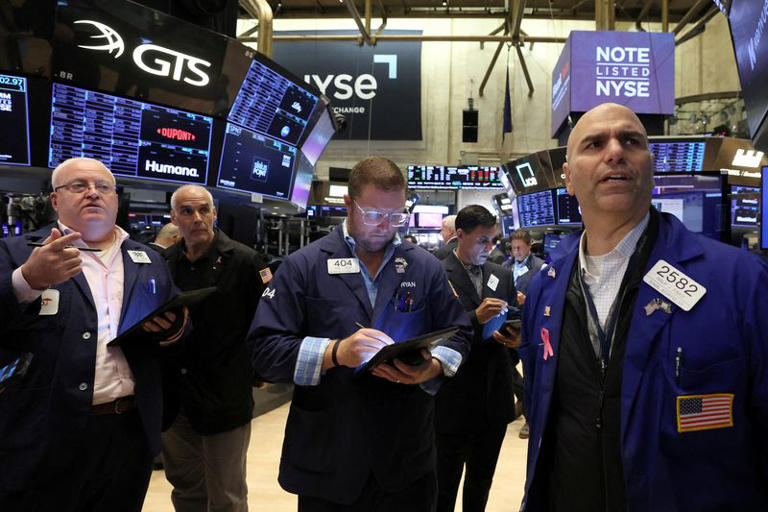As the Federal Reserve prepares to announce its latest policy decision and quarterly economic projections on Wednesday, there’s a sense of relief in other G7 economies that the disinflation process hasn’t completely stalled yet. This sentiment offers some encouragement to the battered bond markets, which have been closely watching for signs of inflationary pressure.
Market expectations have evolved over the past weeks, with futures now indicating a potential first interest rate cut by July and a total of 75 basis points of easing throughout the year. All eyes are on Fed Chair Jerome Powell’s press briefing for insights into the Fed’s approach to its balance sheet runoff and the policymakers’ “dot plot” projections for future interest rates.
Despite concerns in bond markets, stock investors seem unfazed as the S&P500 continues to eke out record closing highs.
Bond markets received a boost in the past 24 hours, despite the Bank of Japan’s decision to end negative interest rates for the first time in eight years and a significant surge in U.S. housing starts last month. The optimism stemmed from inflation updates in Britain and Canada, both of which came in below forecasts for February, suggesting that inflationary pressures may not be as pervasive as feared. Canada’s inflation slowed to its lowest pace since June at 2.8%, prompting markets to increase bets on a rate cut there, causing the Canadian dollar to ease back.
Similarly, ahead of Thursday’s Bank of England policy meeting, data showed British inflation easing more than expected, falling to a more than two-year low at 3.4%. While a rate cut by the Bank of England is already priced in for its August 1 meeting, markets now see a 50% chance of a move as soon as June, leading to declines in gilt yields and sterling.
In Switzerland, a downward revision to the government’s 2024 inflation forecast has fueled speculation that the Swiss National Bank could be the first to ease policy as soon as Thursday. This anticipation has pushed the Swiss franc to its weakest level of the year so far.
While the Bank of Japan’s move to tighten its super-loose stance on Tuesday suggests a divergence from the global trend of potential rate cuts, indications of continued BOJ bond buying pushed the yen to its weakest level of the year, surpassing 151 per dollar.
As a result of these developments, the dollar’s index has surged to its highest level in almost three weeks leading up to the Federal Reserve’s decision.
Despite concerns about interest rate cuts, strong demand at Tuesday’s 20-year Treasury bond auction has allowed Treasury yields to retreat slightly.
Wall Street stock futures remained steady overnight, hovering near the new highs.
In China, stocks edged higher after the People’s Bank of China kept benchmark lending rates unchanged, in line with market expectations.
Nvidia’s shares saw a modest increase after the chipmaker announced that its new flagship AI processor is expected to ship later this year, with CEO Jensen Huang expressing optimism about the potential of the data center market, estimated to be greater than $250 billion.
On the other hand, AI server maker Super Micro Computer saw its shares plummet nearly 9% on Tuesday after announcing plans to sell 2 million shares, potentially fetching about $2 billion.
In Europe, stocks experienced a slight downturn, particularly in the luxury sector, as Kering shares plunged 14.8%, on track for its largest one-day loss on record. This decline followed a warning from the French luxury goods group that its first-quarter sales at its flagship brand Gucci could decline by approximately 20% due to weakness in Chinese demand.
